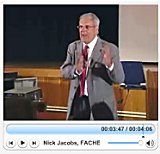Under the category, “There’s no free lunch,” Siddharth Kara, a British Academy Global Professor, has written “Cobalt Red,” the ultimate expose about the underbelly of today’s progress.
Like historical books regarding the human toll movements like the Industrial Revolution represented in the name of progress, this book reveals the hidden cost of our current technological advances. It also exemplifies and uncovers the brutal realities that accompany this current technological transition.
All our battery powered devices require cobalt. As the author states, “Although the scale of destruction caused by cobalt mining in the name of renewable energy is without contemporary parallel, the contradictory nature of mining is nothing new.”
When I first became the CEO at a small hospital originally built for coal miners and their families, it seemed like a good idea to create an historic wall of fame featuring the portraits of the original presidents of the hospital. Immediately after having our maintenance employees hang those pictures of the leaders from the height of the Industrial Revolution, I began getting complaints.
I was angrily informed that some of the still-surviving widows of deceased coal miners objected to any glorification of these men. They accused them of having hired some physicians to lie and say their husbands had died of asthma rather than black lung. That was done, according to them, so the families would not get black lung insurance benefits post-mortem. Some of the offended spouses even told me they had to have their husband’s bodies exhumed to prove they had died of black lung disease.
Of course, the gory details of progress created by the Industrial Revolution as it related to the humans involved in mining coal or making steel were often either taken for granted, overlooked, or simply accounted for like the first wave of warriors in a war involving only bows and arrows. They were considered “the arrow catchers,” collateral damage, the price of progress.
“Cobalt Red” does a deep dive into the current horrors our contemporary revolution is causing. With climate change deniers on one side and world ending climate catastrophe predictors on the other, it feels like the rock and hard place we’re currently faced with regarding the future of mankind has once again put us in a no-win position fed by greed in the name of progress. This journey to create a new world order sans fossil fuels, though potentially unavoidable, is also creating enormous levels of suffering and dying.
Because internationally, most of these mines are considered artisanal or small-scale mines, they are referred to as ASM mines. Unfortunately, these are not small, well controlled and properly run mines. Not unlike the little coal mines that were all over Western PA at the turn of the Twentieth Century, these mines are typically staffed with a workforce that is exposed to hazardous conditions with only rudimentary tools.
There are currently about 45 million people around the world directly involved in ASM mining which, according to Kara, represents about 90 percent of the world’s total mining workforce. Of course, their work does not just involve cobalt. They are also mining for tin, gold, diamonds, sapphires, and tantalum.
The author states his findings in this book very clearly, “There are many episodes in the history of the Congo that are bloodier than what is happening in the mining sector today, but none of these episodes ever involved so much suffering for so much profit linked so indispensably to the lives of billions of people around the world.”
The next time you look at your smart phone, your smart pad or watch, or you fire up your computerized car, just understand that the billion- and trillion-dollar companies who are buying the products of these miners must be aware that there is no clean supply chain that ameliorates the “suffering from oppression accompanied by unimaginable barbarities responsible for the destruction of life.” Once again, corporate greed is a matter of life and death.






